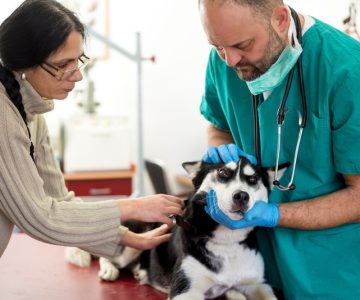Understanding Tooth Resorption Issues in Cats
Both you and your cat are vulnerable to a number of the same health concerns, including dental problems. Though you may struggle with cavities in your teeth due to decay, felines have distinct tooth deterioration. This condition, called feline tooth resorption, results in painful, cavity-like lesions that weaken the teeth’s strength. Feline tooth resorption is typical as cats age, affecting up to 60% of the adult cat population and 75% of senior cats. As a concerned pet owner, you’ll want to educate yourself about this tooth issue.
Types and Stages of Tooth Resorption
Tooth resorption is classified into two different types: Type 1 and Type 2. Type 1 tooth resorption protects most tooth structures but leaves dental flaws inside the crown or root. The sole treatment alternative for teeth suffering from Type 1 resorption is surgical extraction. On the other hand, type 2 resorption happens when the tooth’s root is removed and replaced by bone.
Coronectomy, also known as crown amputation, is a common treatment for Type 2 tooth resorption. The moment tooth resorption is detected in a cat; it is necessary to do routine oral cleanings under anesthesia every 6-9 months. If you are looking for a reliable medical facility to get treatment for your cat’s tooth resorption, you can go online and search for “veterinary hospital near me” to get started.
Causes
Although recorded cases have increased in recent decades, nobody knows why feline tooth resorption occurs. Genetic factors may influence which felines have this condition. Periodontal disease, characterized by persistent inflammation of the dental ligaments and gum tissue, might have a role in Type 1 resorption. The probable reason or contributor to feline tooth resorption is dietary issues such as high acid levels or dietary deficiencies.
Signs
An early stage of feline tooth resorption may only exhibit gingivitis, with blood in your cat’s water or food meal. As the complication advances, you may see dental caries or fractures in the affected teeth. Cats naturally mask discomfort to avoid possible risks. However, you can identify whether your cat is in pain from tooth resorption or other dental disorders.
Keep an eye out for drooling, mood swings, and avoidance of favorite individuals or things. Additionally, you can consult with a veterinarian about the kitten wellness plan and learn how this health care program protects cats from tooth resorption.
Diagnosis and Treatment
Your veterinarian can identify feline tooth resorption by giving your cat general anesthesia and obtaining dental X-rays. A crown and root checkup may help establish the condition’s development while ruling out other potential oral issues. The severity of your cat’s tooth resorption will determine the medical treatment. If your cat’s teeth are slightly damaged, your veterinarian may suggest filling the holes. However, resorptive lesions may occur even after filling.
Therefore this approach should only be used as a temporary solution. Resorption-affected teeth will eventually need to be removed. In Type 1 tooth resorption, your vet will normally extract the entire tooth, reducing pain and gum inflammation. When a feline has Type 2 tooth resorption, the doctor removes just the crown, leaving the roots intact. If you want to learn more about dental care for cats, talk to other cat owners and ask for advice on how they keep their cats’ teeth in good condition.
Final Thoughts
Because the reasons for feline tooth resorption are unknown, veterinarians can not advise prevention treatments. The possible connection between this illness and periodontal disease should motivate you to clean your cat’s teeth at home and professionally. Dietary adjustments may reduce your cat’s risk of tooth resorption. Ask your vet whether your cat needs a different special diet plan or nutritional supplement.





